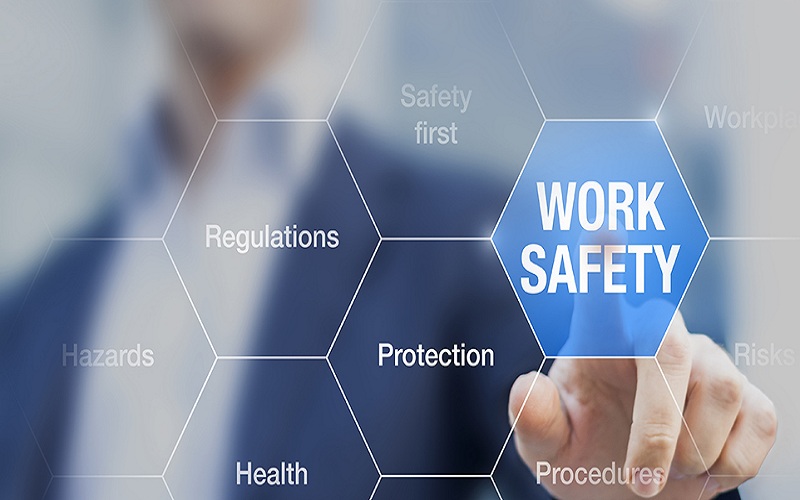Workplace injuries can have devastating consequences for both employees and employers. While accidents may sometimes be unavoidable, taking proactive measures to prevent them is crucial for maintaining a safe and productive work environment. In this comprehensive guide, we’ll explore the responsibilities of employers and the rights of employees in preventing workplace injuries.
Understanding Employer Responsibilities
Employers have a legal and moral obligation to ensure the safety and well-being of their employees. This includes:
- Providing a Safe Work Environment: Employers must identify and mitigate potential hazards in the workplace to minimize the risk of accidents and injuries. This may involve implementing safety protocols, providing appropriate training, and regularly inspecting equipment and facilities.
- Complying with Safety Regulations: Employers must adhere to relevant safety regulations and standards established by government agencies such as OSHA (Occupational Safety and Health Administration). Failure to comply with these regulations can result in fines, penalties, and legal liabilities.
- Offering Adequate Training: Employers must provide comprehensive training to employees on workplace safety procedures, emergency protocols, and the proper use of equipment and machinery. Regular refresher courses should be conducted to reinforce safety practices.
- Maintaining Records: Employers are required to keep detailed records of workplace injuries, accidents, and safety inspections. This information helps identify trends, assess risk factors, and implement preventive measures effectively.
Employee Rights in Workplace Safety
Employees also have rights when it comes to workplace safety. These rights include:
- The Right to a Safe Workplace: Employees have the right to work in an environment free from hazards that could cause serious harm or injury. They should report any unsafe conditions or practices to their employer or the appropriate regulatory agency.
- Access to Safety Information: Employers must provide employees with access to safety manuals, training materials, and information about potential workplace hazards. This empowers employees to take proactive measures to protect themselves and their colleagues.
- Protection Against Retaliation: Employees have the right to raise concerns about workplace safety without fear of retaliation or discrimination. Employers cannot take adverse action against employees for reporting safety violations or participating in safety-related activities.
- Workers’ Compensation Benefits: In the event of a work-related injury or illness, employees have the right to file a workers’ compensation claim to receive medical treatment and compensation for lost wages. Employers are required to carry workers’ compensation insurance to cover these expenses.
Importance of Legal Guidance
In cases where workplace injuries occur, seeking legal guidance from experienced professionals is essential to protect the rights of both employees and employers. In Wilkes-Barre, PA, wilkes barre lawyers specialize in representing clients in workplace injury cases. These knowledgeable attorneys can provide expert legal advice and representation to ensure that injured workers receive the compensation they deserve and that employers fulfill their legal obligations.
Strategies for Preventing Workplace Injuries
In addition to fulfilling their legal obligations, employers can implement various strategies to reduce the risk of workplace injuries:
- Risk Assessments: Conducting regular risk assessments helps identify potential hazards and prioritize safety measures. Employers should involve employees in the assessment process to gain valuable insights into daily operations and potential risks.
- Safety Training Programs: Implementing comprehensive safety training programs equips employees with the knowledge and skills necessary to identify hazards, use equipment safely, and respond effectively to emergencies. Training should be tailored to specific job roles and regularly updated to reflect changing circumstances.
- Promoting Safety Culture: Fostering a culture of safety within the organization encourages employees to prioritize safety in their daily activities. Employers can promote safety through regular communication, recognition of safe behavior, and establishing safety committees to address concerns and suggestions from employees.
- Providing Personal Protective Equipment (PPE): Ensuring that employees have access to appropriate personal protective equipment, such as helmets, gloves, goggles, and earplugs, is essential for minimizing the risk of injury in hazardous environments. Employers should provide training on the proper use and maintenance of PPE to maximize effectiveness.
- Ergonomic Assessments: Workplace ergonomics plays a significant role in preventing musculoskeletal injuries and promoting employee comfort and productivity. Employers should conduct ergonomic assessments to identify ergonomic risk factors and implement measures to mitigate them, such as adjustable workstations, ergonomic seating, and regular breaks.
- Regular Maintenance and Inspections: Routine maintenance and inspections of equipment, machinery, and facilities are critical for identifying and addressing potential hazards before they result in accidents or injuries. Employers should establish maintenance schedules and procedures and ensure that employees are trained to recognize signs of equipment malfunction or deterioration.
- Encouraging Open Communication: Establishing channels for open communication between management and employees allows for the timely reporting of safety concerns, near misses, and potential hazards. Employers should encourage feedback from employees and address safety issues promptly to prevent accidents and improve overall safety performance.
Employee Engagement in Safety
Engaging employees in safety initiatives is key to preventing workplace injuries and fostering a culture of safety. Employers can involve employees in safety committees, hazard identification and risk assessment processes, and safety training programs. By empowering employees to take an active role in safety management, employers can tap into their knowledge and experience to identify and address potential hazards effectively.
Conclusion
Preventing workplace injuries requires a concerted effort from employers, employees, and legal professionals. By fulfilling their legal responsibilities, implementing proactive safety measures, and promoting a culture of safety, employers can create a work environment that prioritizes the well-being of their workforce. Likewise, employees must be aware of their rights, actively participate in safety initiatives, and report safety concerns promptly. With the guidance of legal professionals specializing in workplace injury cases, employers and employees can work together to prevent accidents, protect rights, and ensure a safer and healthier workplace for all.






